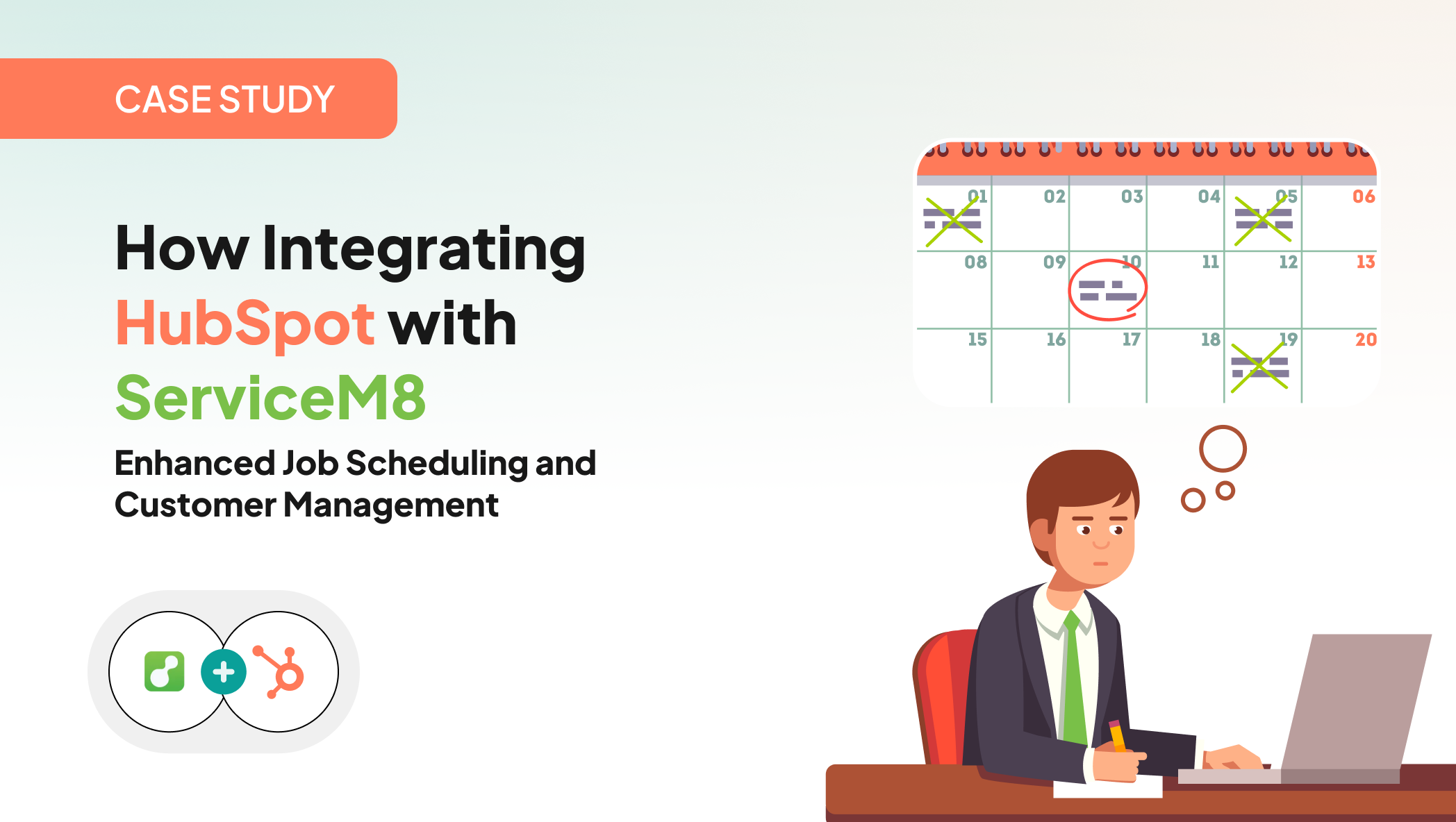Overview Broadsign is a global leader in digital-out-of-home (DOOH) advertising software, used by...
written by: Renuka M
Problem Statement
Our client was managing customer information and job workflows manually within ServiceM8, resulting in repetitive data entry, operational delays, and inconsistencies across systems. They wanted to automate their customer onboarding and job management by integrating HubSpot with ServiceM8, enabling a seamless two-way data flow between both platforms. The customer wished to see the sales and marketing features provided by HubSpot.
About ServiceM8
ServiceM8 is a cloud-based job management platform designed for service-based businesses such as electricians, plumbers, and cleaners. It simplifies job scheduling, quoting, invoicing, and communication between office and field staff. However, since ServiceM8 lacks a native integration with HubSpot, data synchronization between contacts, deals, companies, etc had to be handled manually.
Key Challenges
1. Customer Onboarding via Portal
The client wanted new customers to submit requests directly through their website. We built a custom HubSpot contact form integrated into the client’s website, allowing customers to request quotes online. When a form was submitted, a HubSpot contact was automatically created, and the sales team was notified to follow up and verify the customer.
2. Managing Two-Way Sync Operations
Ensuring real-time synchronization between HubSpot and ServiceM8 was a core challenge. Any updates made in one system — such as customer details or job information — were reflected in the other using webhooks and middleware logic. To avoid data loss, we added a retry mechanism that handled failed sync operations gracefully. Handling simultaneous updates and webhook triggers from both platforms required intelligent conflict resolution logic.
3. Duplicate Customer and Job Creation
Two-way synchronization risked duplicate records appearing in either system. We addressed this by developing a middleware database that tracked only internal platform IDs, ensuring each record had a unique mapping between HubSpot and ServiceM8. No customer or job data was stored in our servers — only metadata necessary for synchronization.
Integration Approach
1. HubSpot Custom Form Implementation
Designed and embedded HubSpot forms on the client’s website for customer onboarding and quote requests. Integrated HubSpot’s analytics and reporting features to track how many customers are submitting forms, helping the client measure engagement and conversion.
2. Webhook & Sync Management
Configured HubSpot and ServiceM8 webhooks to listen for updates and trigger synchronization between the two systems. Built a middleware logic layer to handle simultaneous data updates and maintain consistent record states across both platforms.
3. Middleware Tracking System
Created a secure middleware layer hosted on AWS, Azure, or GCP, depending on the client’s preferred cloud provider. The middleware handled synchronization tracking without storing sensitive customer data. Designed for security, scalability, and seamless integration, ensuring high availability and low latency during sync operations.
4. Retry & Error Handling Mechanism
Implemented a queue-based retry mechanism for failed API calls or synchronization issues. Failed records were added to a message queue, processed again automatically, and updated in the database. Each retry attempt updated a status tracker in the database, enabling transparency and reporting on synchronization performance.
5. Duplicate Prevention Logic
Used record-matching and validation rules in the middleware database to ensure accurate synchronization. The system cross-referenced internal platform IDs to ensure updates matched existing records, preventing data duplication and maintaining data integrity.
Results & Outcomes
- Automated Workflow: Customer onboarding and job creation became completely automated, reducing manual entry.
- Seamless Two-Way Sync: HubSpot and ServiceM8 data stayed consistently updated in real-time.
- No Duplication: The middleware tracking and validation logic ensured unique customer and job records.
- Enhanced Reporting: The client could now track form submissions and sync activities directly from HubSpot analytics and middleware reports.
- Improved Efficiency: Sales teams and field staff collaborated seamlessly between HubSpot (CRM) and ServiceM8 (job operations).
- Data Security: Middleware stored only platform identifiers — no personal or job data — ensuring compliance and security.
-1.png?width=134&height=66&name=amwhiz-logo%20(1)-1.png)



